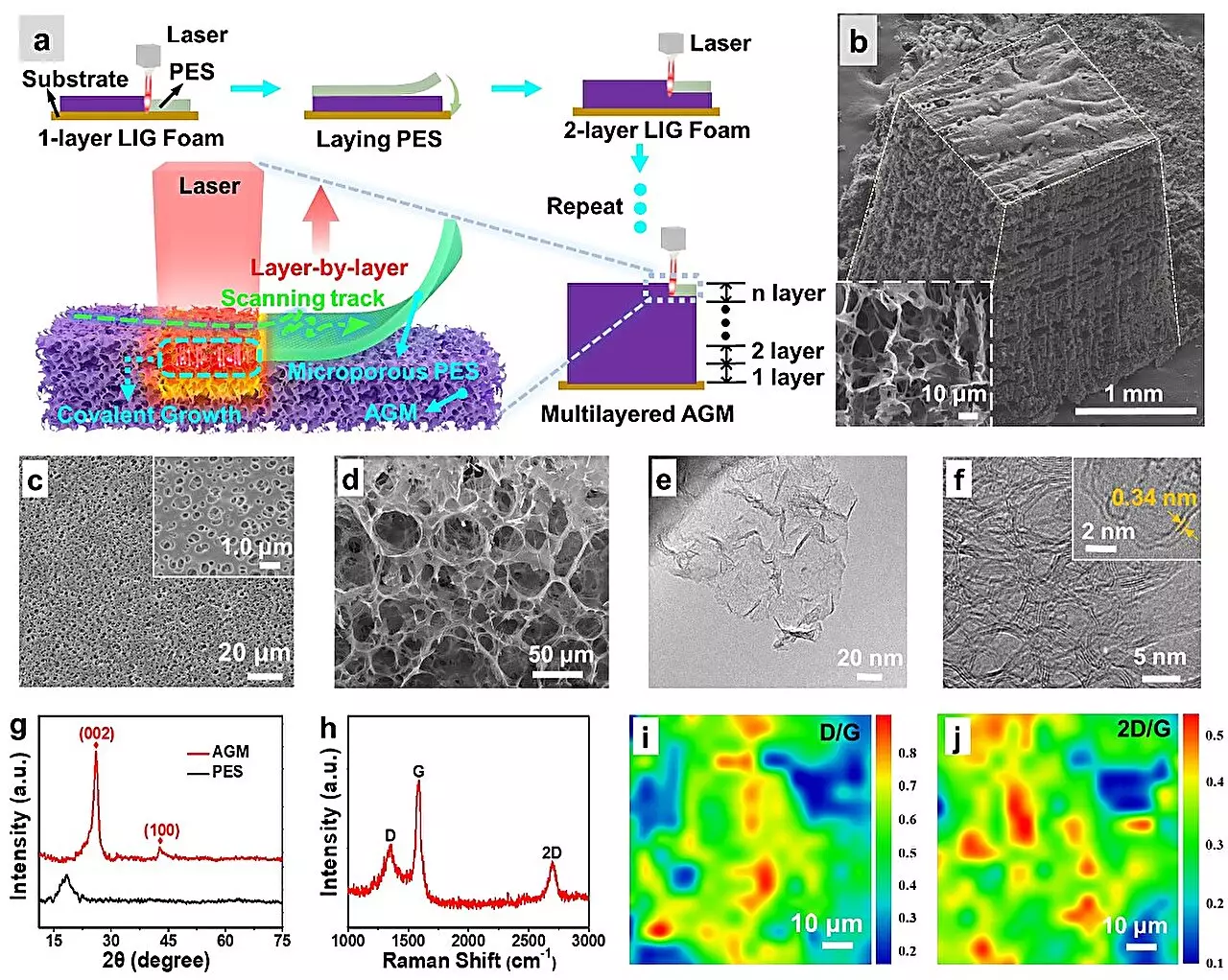The production of graphene, a two-dimensional carbon material with exceptional properties, has always been a challenge. Conventional methods have limitations that result in discontinuities in the crystal structure, hindering its electrical properties. However, researchers from Hefei Institutes of Physical Science (HFIPS), Chinese Academy of Sciences (CAS) have recently proposed a groundbreaking laser-assisted covalent growth method for preparing highly crystalline all-graphene macrostructures (AGMs). This method shows great promise for the large-scale application of graphene, with implications in various fields such as energy storage, electronics, electromagnetic shielding, and sensors.
Traditionally, methods like liquid phase self-assembly, 3D printing, and catalytic template techniques have only been able to achieve non-covalent weak interactions between graphene sheets. This results in discontinuities in the crystal structure and hampers the electrical properties of graphene macrostructures. In their study, the researchers used a covalently interconnected AGM with micro-to-macro scalable electrical properties. They achieved this by laminating a microporous polyethersulfone (PES) membrane and carbonizing each stack layer seamlessly through a laser in an air environment.
To gain further insights into the covalent growth mechanism of AGMs, the researchers conducted molecular dynamics simulations. These simulations revealed the enhancement in cross-layer conductivity achieved by the covalent growth approach compared to non-covalent assembly. The researchers observed a 100-fold increase in cross-layer conductivity, indicating the effectiveness of the laser-assisted covalent growth method.
The efficacy of AGMs has been demonstrated in various applications, particularly in supercapacitor electrodes. The high-quality and efficient preparation of graphene macrostructures are essential in energy storage, electronics, electromagnetic shielding, and sensors. The covalent growth technique offers a solution to these challenges, allowing for the production of macroscopic graphene with exceptional properties.
The laser-assisted layer-by-layer covalent growth method proposed by the researchers from HFIPS, CAS is a significant breakthrough in the field of graphene production. It addresses the limitations of conventional methods and allows for the preparation of highly crystalline all-graphene macrostructures with improved electrical properties. The covalent growth technique opens up new possibilities for the large-scale application of graphene in various fields, revolutionizing energy storage, electronics, electromagnetic shielding, and sensors. With further research and development, this method has the potential to unlock the full potential of graphene and its exceptional properties.


Leave a Reply